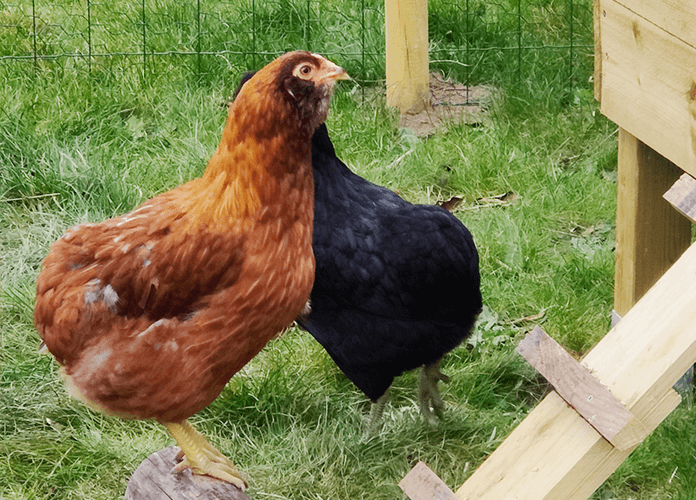Why Does A Chicken Purr?

Chickens talk. They do, a lot! But there’s more to chicken sounds than a rooster’s crow or the song of a hen laying a fresh egg. It might seem like your chicken is sometimes purring. Yes, purring, like a cat. It’s not that uncommon, and we’ll address all you need to know about this behavior.
What does a chicken purr sound like?
Chicken purring, or chicken trilling, sounds a lot like a cat’s purr. It’s a soft, lyrical trilling sound that’s usually made out of contentment. A chicken’s purr can also sound like a multi-tonal song and can be somewhat frightening if you’ve never heard a chicken do this before.
Not all chickens or breeds purr, this depends on chicken to chicken. However, some chicken keepers say it’s most common with blue and green egg layers such as Ameraucanas and Easter Eggers. But this is not scientifically proven.
Why does a chicken purr?
There are a few reasons a chicken would purr or ‘trill’. Contentment is the main reason a chicken makes this soft trilling sound, but there are others. Let’s see.
Happiness
In most cases, a chicken trilling or purring does this out of pure and utter contentment. It can sound a bit odd at first, but you’ll find this sound to be quite soothing and relaxing to listen to. Pet chickens can purr when you’re petting or brushing them when you hold them on your lap. Backyard chickens mostly purr during dustbathing, sunbathing, or sitting on an egg.
Broodiness
A broody hen sitting on eggs does not like to be disturbed. When trying to take her off the eggs or make her eat or drink, she’ll be making annoying noises, sounding a lot like purring. She’s warning you to back off! Watch out, broody hens can be quite feisty and peck anyone who comes near.
Warning others
Flock members aren’t always friends. Sometimes, they just tolerate each other. Chickens are sociable animals that like being part of a flock and are happier when in the company of others. But that doesn’t mean they’ll like each other. Some characters won’t be a good match.
There’s no need to worry. The herding community is very powerful. But this means chickens can and will annoy each other sometimes. The purring sound lets other chickens know this is not the best time to bother them. It’s a strong ‘leave me alone’.

How do Chickens create sound?
Besides the purring, chickens make all sorts of noises, like distress calls or warning sounds. But how do they do that? And do chickens have vocal cords like mammals? Let’s find out.
A chicken’s vocal system
Chickens use sound in many ways, more than we can imagine. They constantly communicate with each other by using unique vocalizations. Chickens, as well as all other birds, have a particular way of producing sound. Their vocal organ is called the ‘syrinx’ and is located at the base of the chicken trachea. A bird sound is created by vibrating the ‘wall ‘of the syrinx and the pessulus combined.
As said before, there are many chicken sounds. The most common noises are:
- Distress calls/warning
- Rooster crow
- A hen’s song after/while laying an egg
- Contentment purr
- Broody hen growl
- Chicken chatter
All sounds have their specific function. By listening and watching your chickens, you can learn to understand what they are talking about and how well they are getting along. Deciphering your chickens’ communication methods can help you to recognize their needs.
Do chickens have vocal cords?
No. Unlike mammals, chickens and birds do not have vocal cords. They can produce sound without the presence of any vocal cords by vibrating the syrinx and pessulus.
summary
Chickens create many sounds, like crowing or clucking, but they can also purr. Most chickens purr out of pure contentment. It’s a sign of well-being and happiness. But a chicken’s purr can also signify broodiness or a warning. If you listen and watch your flock for some time, you can quite easily find out how they communicate with each other and how they try to communicate with you.



















